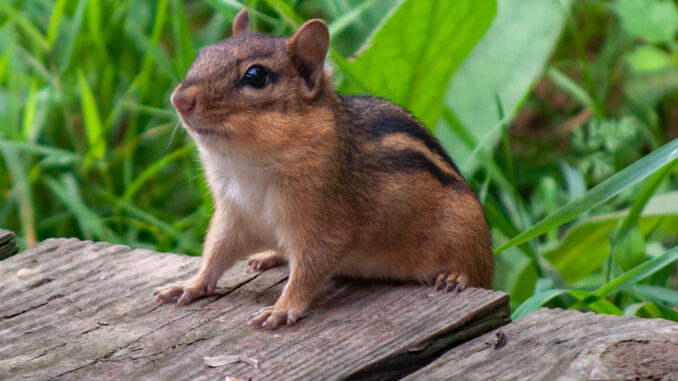
Chipmunks in North Carolina are only known to live north and west of Wake County, however, a recent photograph submitted to the N.C. Wildlife Resources Commission has biologists wondering if its range has expanded to eastern North Carolina.
“We recently received an observation with photos of a chipmunk in the Wilmington area. It is likely a case of hitch hiking, however we’d like the public to notify us of any chipmunk sightings east of Wake County,” stated Andrea Shipley, a mammalogist with the Wildlife Commission.
Staff biologists are specifically interested in sightings in New Hanover, Brunswick, Onslow, Duplin, Sampson, Bladen, Cumberland, Moore, Montgomery, Anson, Richmond and Robeson counties.
Chipmunks are found in both urban and rural habitats. The eastern chipmunk prefers open woodlands or forest edges, with plenty of cover and dry hillsides for digging burrows. The chipmunk is most active in early morning and late afternoon, gathering and storing seeds, nuts, acorns and berries. Unlike squirrels, chipmunks spend most of their time foraging on the ground, climbing trees only occasionally.
Chipmunks have distinctive coloring – reddish brown fur, a black stripe down the center of its back and a set of two black stripes. They are smaller than squirrels, measuring eight to 10 inches long, including three to four inches of tail. The chipmunk’s most distinguishing feature is its large cheek pouches, usually full of nuts or seeds to unload in an underground storage burrow.
Burrows provide protection from predators such as hawks, owls, foxes and snakes, and safe quarters during winter months when cold weather brings on a state of deep sleep.
If you live in any of the counties specified and observe a chipmunk or its habitat, please take a picture, note the location (GPS coordinates preferred) and contact the Commission’s NC Wildlife Helpline, Monday through Friday, 8 a.m. – 5 p.m., at 866-318-2401, or email anytime at HWI@ncwildlife.org.





















